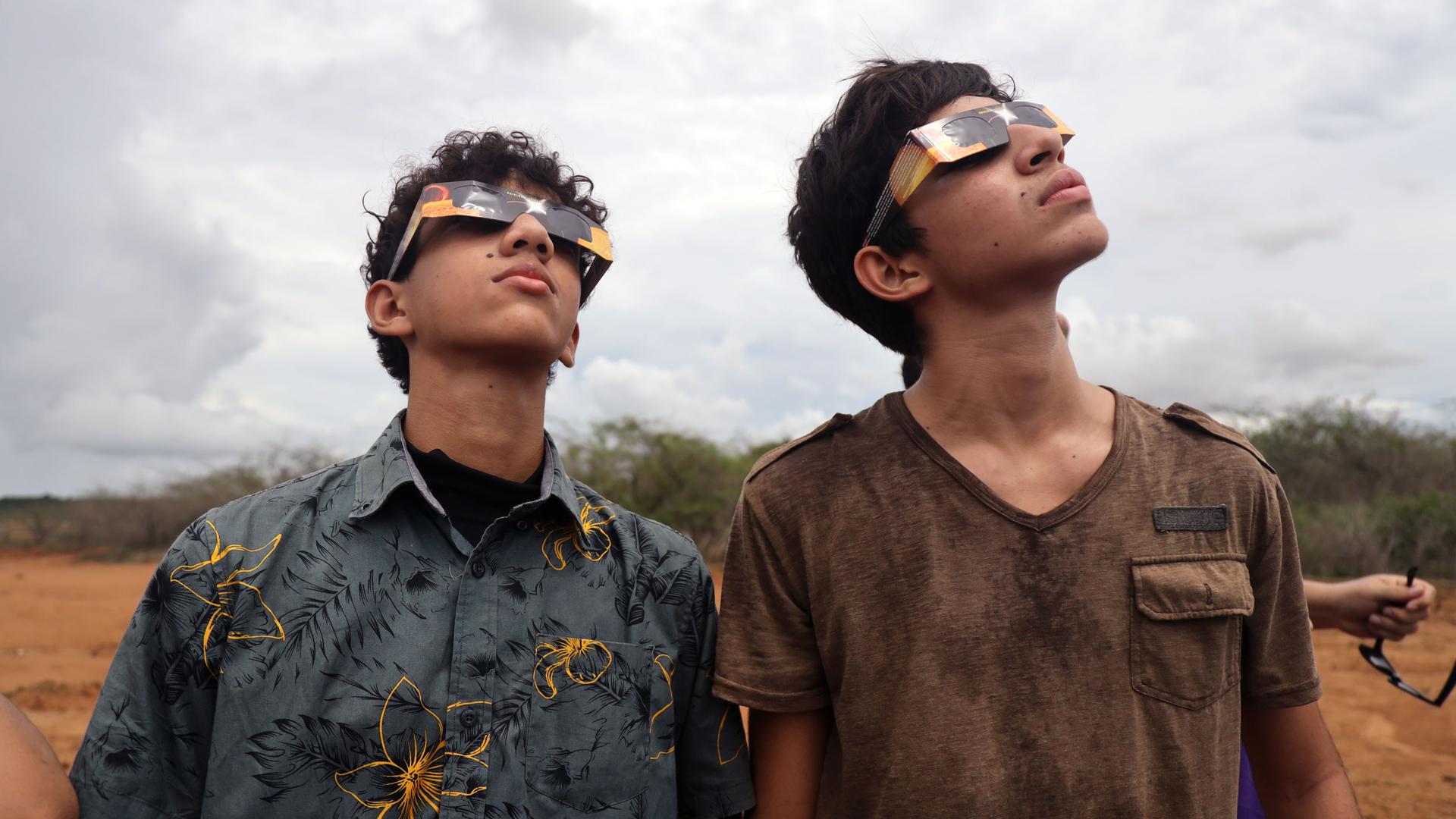‘The cosmovision of our ancestors’: Panama witnesses first solar eclipse in 25 years
A buzz of expectation filled the large red tent set up in front of the visitor’s center at Panama’s Center of Space Sciences over the weekend as crowds prepared for a once-in-a-lifetime viewing of a solar eclipse.
Sarigua National Park, one of the driest spots in Panama, is probably one of the best places to see the astrological event during the country’s rainy season.
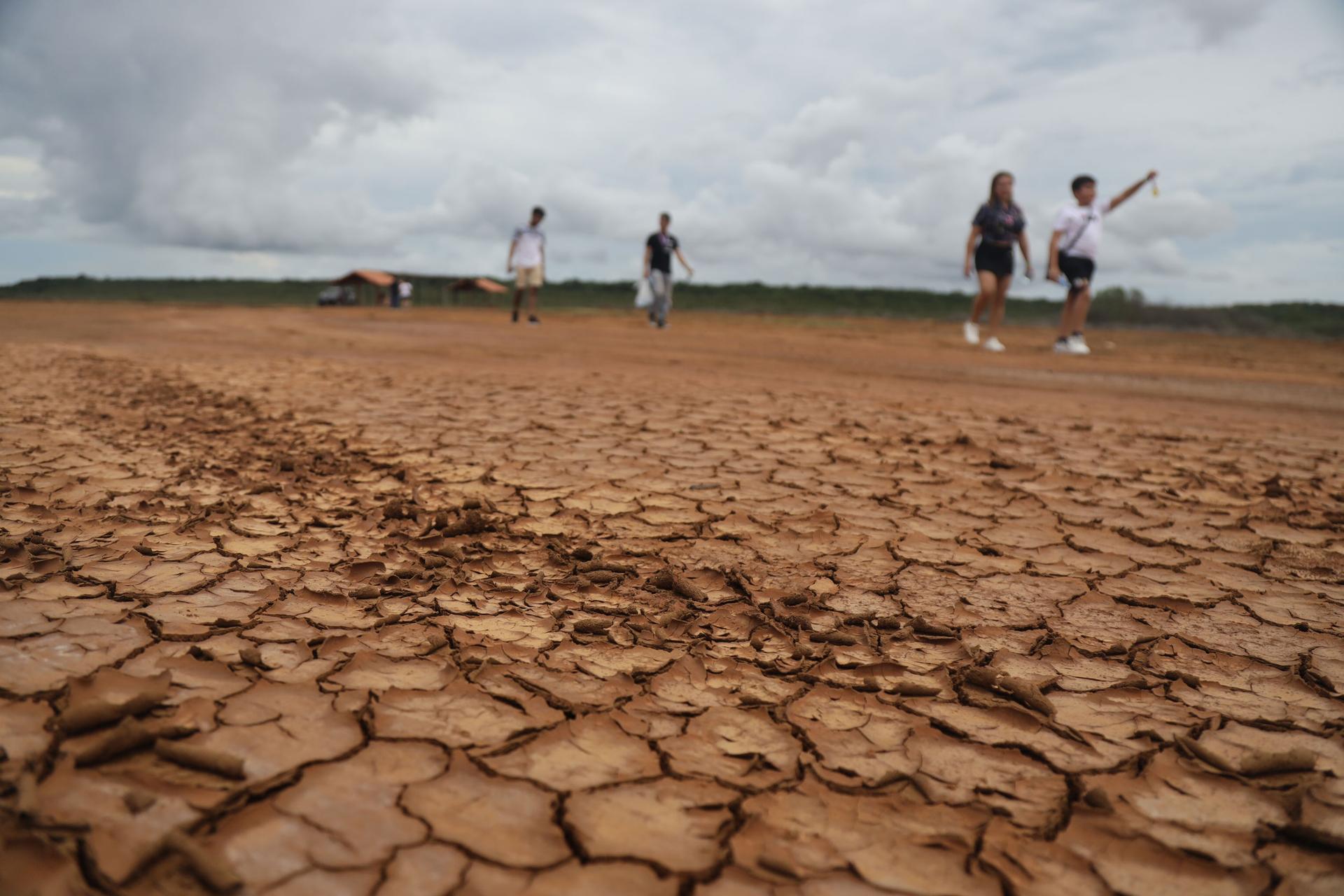
“I’ve never seen an eclipse in my life,” said André Rodriguez, a 15-year-old astronomy buff, with braces and a picture of Saturn on his shirt. “And I’m super excited to hopefully get to see one today.”
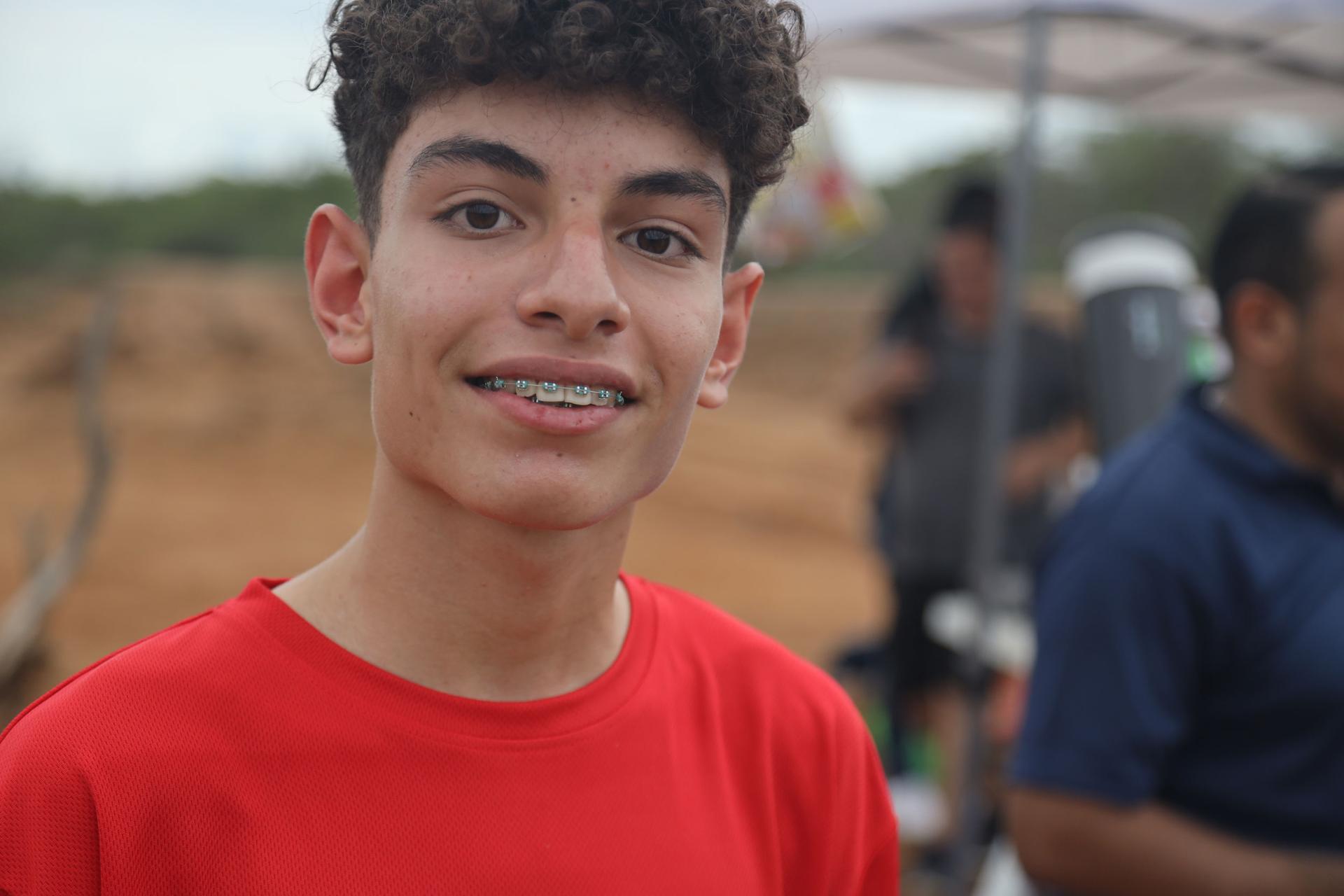
Skies were cloudy but the sun kept popping in and out.
And then — first contact — the moment when the moon begins to carve its way across the sun. One person saw it. Then another. Everyone threw on their safety glasses and looked to the sky.
“We’re so excited,” said Madelaine Rojas, the country’s first female astrophysicist and the founder of the Panama Center of Innovation in Space Sciences, CENACEP, a new nonprofit group dedicated to promoting space science across Panama.
She had been organizing this event for months.
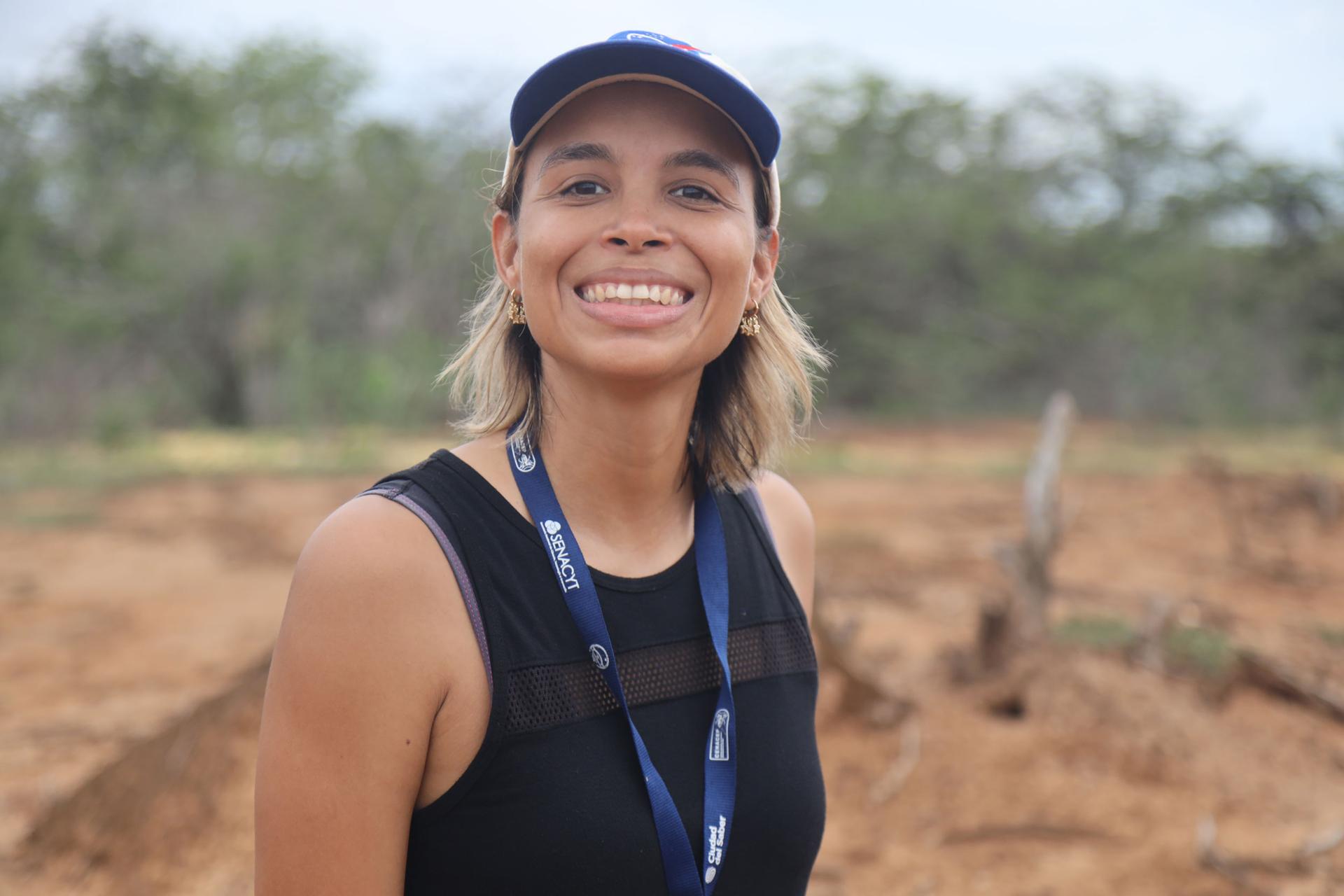
“This reminds us of the cosmovision of our ancestors,” she said. “How they predicted these types of phenomena that were really important to them. The skies and the celestial bodies were the most important for them,” she said of the event’s significance.
But Rojas is also looking toward the future. She said they want to convert Panama into a hub for science and astronomy and are taking strides to make that happen.
Earlier this year, Roja’s Space Sciences Center signed a deal with Ecuador’s Cotopaxi Universidad to help it develop AstroTourism, or astronomy tourism in the country. The focus will highlight the country’s ethnocultural relationship with astronomy: ancient rock carvings, archeological sites, and Indigenous understanding of the skies, past and present.
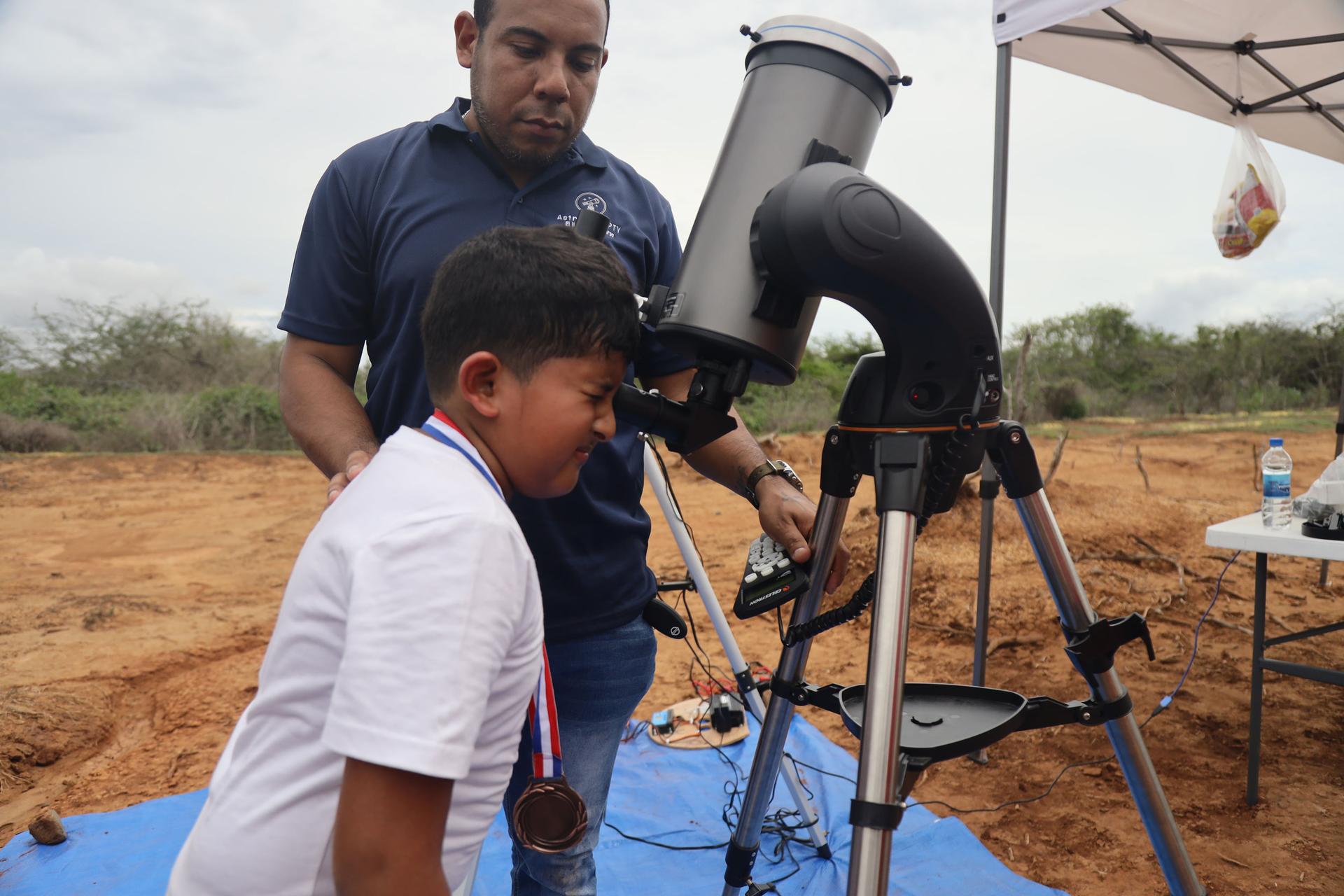
“But,” she said. “We have something else, which is our connection as a hub of the Americas. In between the north and the south. This allowed us to host the Latin American Astronomical Olympics.”
The event is like an international science fair for the stars and it took place in mid-October. Hugo Fares, 17, was among the students selected from across Latin America who attended.
“The event was really cool,” said the long-haired student with glasses, who wore a yellow Brazilian Astronomy Olympics shirt. “Because we got to meet people from several countries, from Argentina to Colombia. And it was great getting to share experiences.”
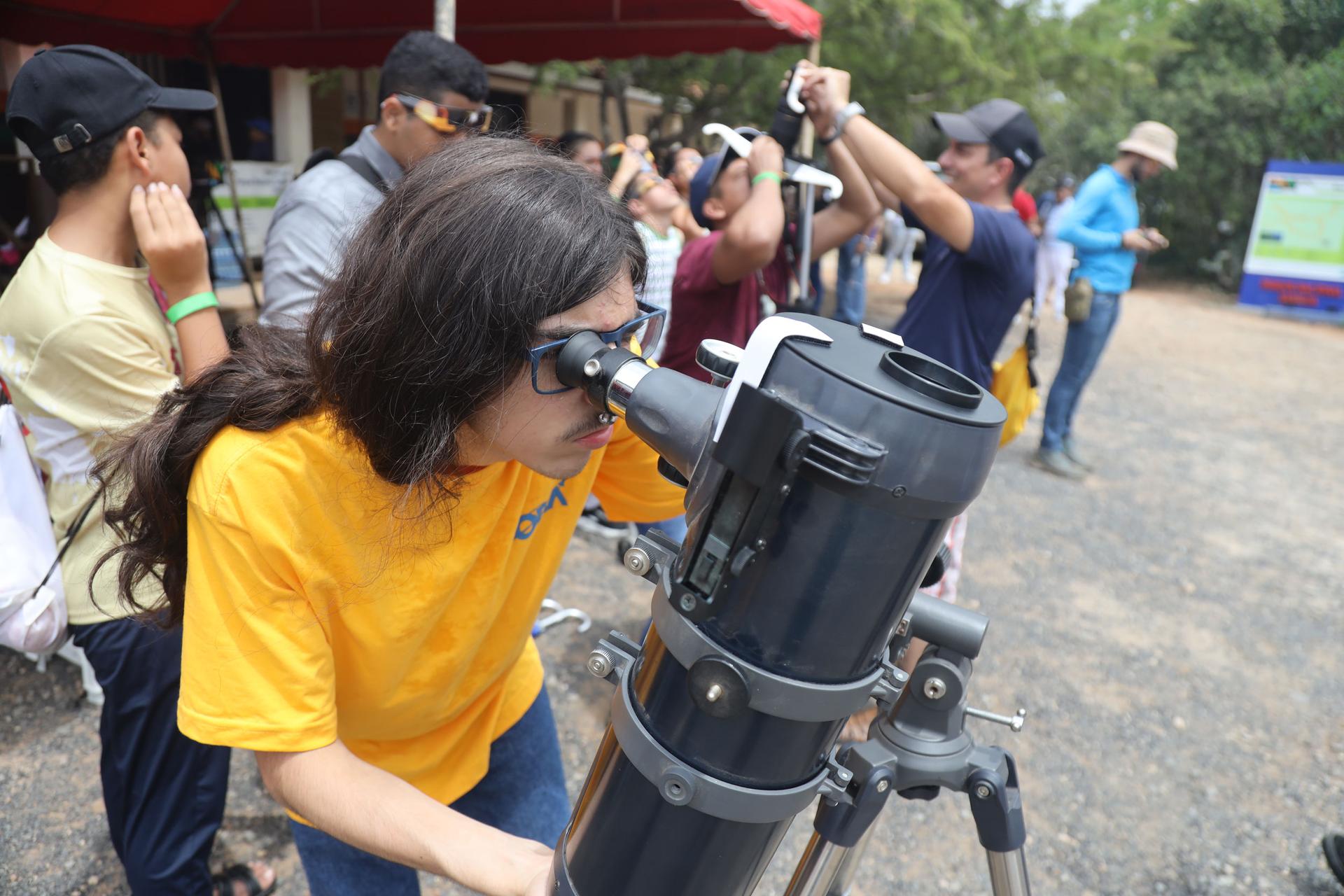
Back under the eclipse, clouds slid past. The moon was about halfway across the sun.
And then came the race — the country’s first one held during an eclipse. It was only about a mile long, with a couple dozen people lined up, adults and children, alike.
Medals were handed out by the first active astronaut ever to visit Panama, Russian cosmonaut Oleg Artemyev. He participated in the activities throughout the week.
“Keep running,” he said through a translator into Spanish. “Sports are important. As are the astronomy olympics.”
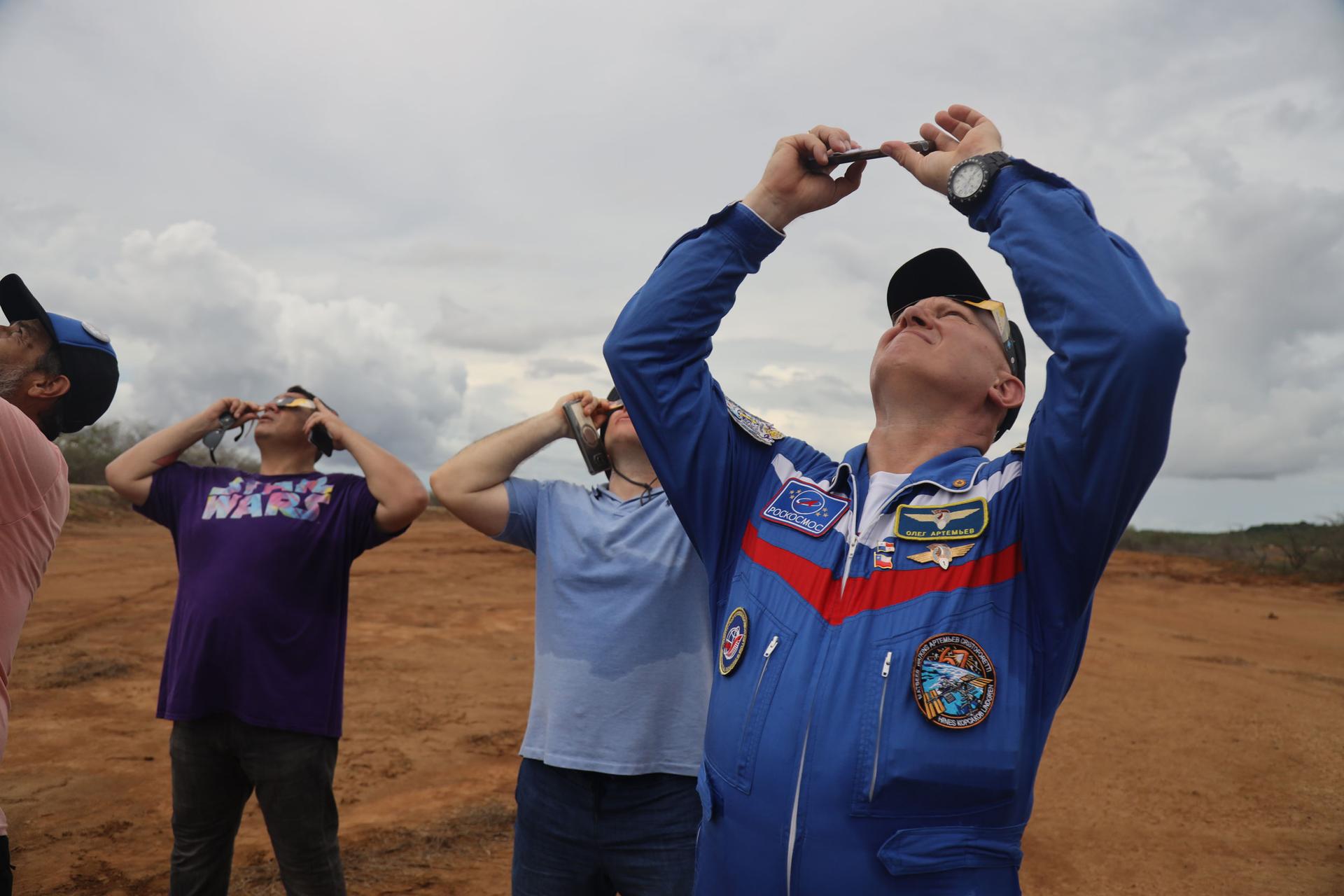
It was almost time. The crowd congregated around a pair of telescopes set up on the dry salt marsh, pointed toward the sun. The clouds kept getting in the way. But then, they slid aside.
And the moon moved into full position in front of the sun. Cheers erupted from the crowd.
The moment they’d been waiting for.
Everyone stared up with their eclipse glasses over their eyes.
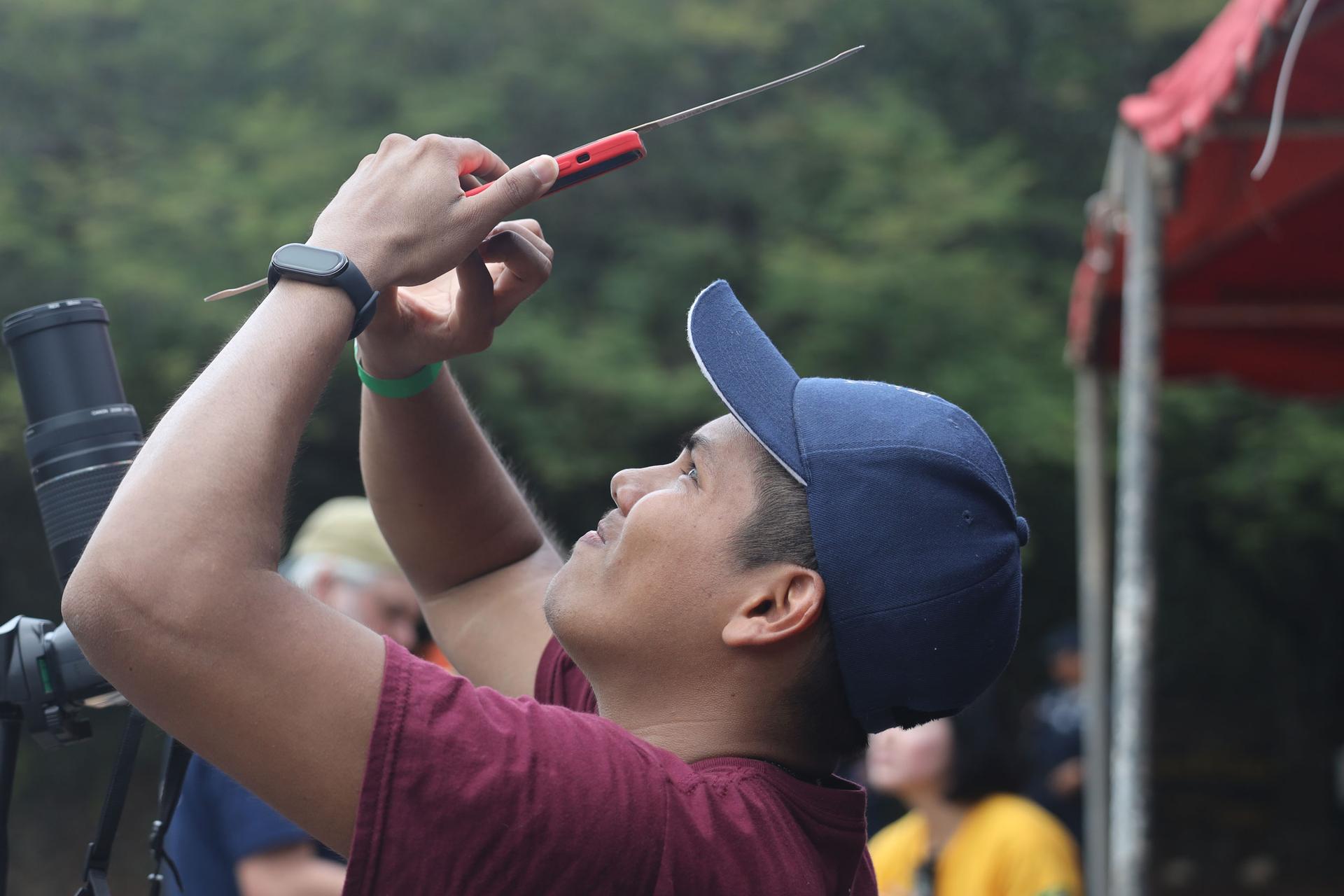
This was what’s called an annular eclipse. It doesn’t block the sun completely, but the moon creates what looks like a ring of fire.
“The temperature has changed completely,” said Luis Rivera, a visitor in the crowd. “It’s gotten chillier, with the sun behind the moon. And the eclipse is incredible. It’s just incredible.”
Astronomy buff André Rodriguez was floored.
“It’s incredible,” he said. “You can see it even better than expected. It’s amazing. And so great to share this moment with all of these people who also love astronomy.”
For many there, this was a once-in-a-lifetime event.
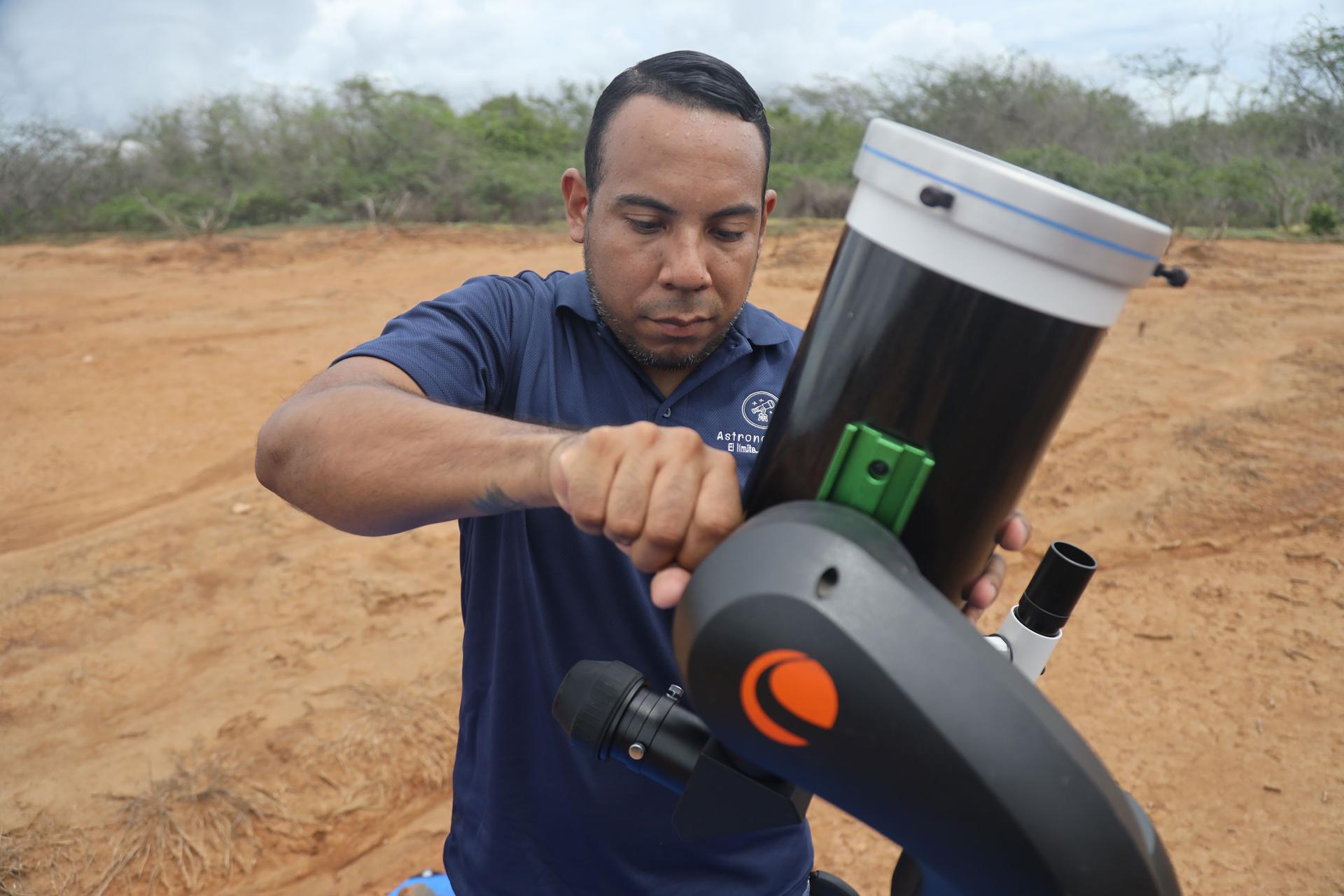
“Before, astronomy was something no one knew about here in Panama,” said Gregory Guerrero, an amateur astronomy enthusiast who brought one of the telescopes.
“Now look. We’re here with a cosmonaut, people from different countries, Brazil, journalists. It’s really exciting to be here.”
And, he said, he hoped it was a sign of big things to come.
We want to hear your feedback so we can keep improving our website, theworld.org. Please fill out this quick survey and let us know your thoughts (your answers will be anonymous). Thanks for your time!
